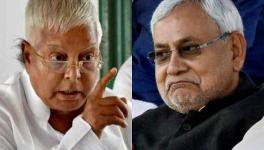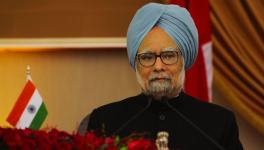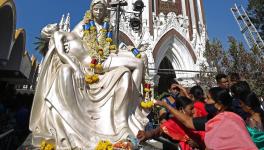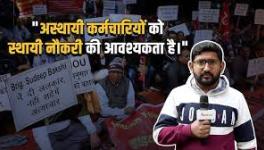Yoga: Devoid of Narrowness and Sectarianism
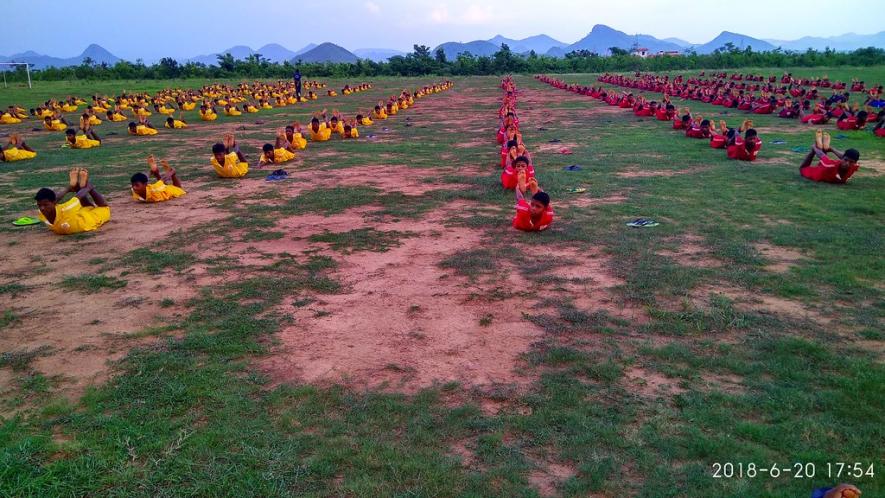
Yoga is not unidimensional. It is manifold in forms. It embraces diverse approaches to attain higher consciousness and elevate oneself from the material, body and sense-based existence to a higher level of realisation. To reduce it to only some form of Asanas or breathing exercises is to miss the totality and essence of Yoga. Swami Vivekananda described it as “one of the greatest of sciences” and said, “breathing, postures etc,. no doubt helps in Yoga , but they are merely physical. The great preparations are mental.” That is why the mind and psyche rooted in ethics and morality, and reared by the ideals of non-possession, non-violence and non-stealing, are considered integral and indispensable to the pursuit of Yoga. The ethical and moral orientation of the mind needs to be emphasised by the proponents of Yoga who often focus on the Asanas or physical postures and completely lose sight of its very basis and foundation. That is why celebrations of Yoga should be celebrations of ethics and morality and constant striving for evolving from one stage of consciousness to a much higher stage. A fractional approach to Yoga by emphasizing only on Asanas is a partial and limited approach which reduces its deeper significance to only one dimension. All those who stress on Yoga and persuade others to embrace it in daily life need to be mindful of the highest ideals of acceptance, tolerance, fraternity and fellow feeling. The binary notion and vision of seeing the world in terms of ‘us’ vs. ‘them’ and hating those who do not pursue Yoga or coercing them to follow it is a negation of Yoga itself. A Yogi can never say that Islam and Hinduism cannot coexist. Swami Vivekananda wrote, "Yoga means the union of man with whole humanity; to the mystic, his lower and higher self... to the philosopher, it is the union of all existence. This is the meaning of Yoga." Mahatma Gandhi wrote on 4th December 1930 that "Yoga is no use, nor is the saffron coloured robe nor mixing up all thy food. Whether thou wearest bhagva or white garments is of little significance, the thing to do is not to hurt any creature and to wish it well".
Yoga’s foundational pillars inspired Mahatma Gandhi
Such a broad and expansive approach is missing even as celebrations of International Day of Yoga are now becoming annual features, both globally and nationally.
A peep into our history reveals that during the freedom struggle, Mahatma Gandhi undertook unprecedented endeavours to invoke the foundational pillars of Yoga such as Satya (Truth), Ahimsa (Non-violence), Brahmacharya (disciplining of senses and carnal desires), Aparigraha (Non-possession) and Astreya (Non-stealing) to give a much-needed moral dimension to liberate India from colonial rule. He integrated these foundational pillars with his other ideals such as Sarva Dharma Sambhav (Equality of all religions), Sarvatra Bhaya Varjana (Removal of Fear), Swadeshi (use of indigenous and local resources), Sparsha Bhavana (Removal of untouchability) and Sharira Shram (Bread Labour) and Aswad (Control of Palate) and framed his eleven vows. His main emphasis was that by following such ideals, individuals would be able to first rule themselves on the basis of a disciplined body and mind and usher in self-rule for our country by putting an end to British rule through non-violent means. He had a larger vision of self-rule shaped by disciplining of mind, body and senses for the cause of a non-violent social and economic order which would be beneficial for India and the whole world.
The Divine Life Society (Divya Jivan Sangh), founded by Swami Sivananda in Rishikesh, celebrates Gandhi Jayanti on October 2 every year. The Society and its revered monks and devotees recall gratefully the phenomenal contributions of Mahatma Gandhi in applying the foundational principles of Yoga (Satya, Ahimsa, Brahmacharya, Aparigraha, Atreya) to the complex problems of politics, economics and society and, above all, for our liberation from centuries of foreign rule. On one such occasion, Swami Nirliptananda, a senior monk, said that during the freedom struggle Swami Sivananda was deeply impressed by Gandhiji’s method of struggle for freedom by applying the basic principles of Yoga and, therefore, he used to send a special emissary to extend his support. He also said that Mahatma Gandhi, by applying the main principles of Yoga to find solutions to intractable problems confronted by humanity, earned for himself a position higher than that of all monks in the annals of spirituality. Swami Nirliptananda’s message was that by following the central aspects of Yoga or Sanyasa, Gandhiji launched the non-violent movement for freedom and independence and gave a much-needed moral dimension to our arduous struggle for liberation.
Jawaharlal Nehru and Yoga
Our first Prime Minister, Jawaharlal Nehru, in his book Discovery of India, reflected deeply on Yoga and underlined the magnificent narrative associated with the ancient wisdom of our country. In his quest for understanding and exploring India’s rich cultural and civilisational legacy, he reflected on Yoga in that book in the late 1940s to sensitise the younger generation to our invaluable spiritual wisdom which gives meaning and significance to material and sense-based life. He wrote: “The Yoga system of Patanjali is essentially a method for the discipline of the body and the mind leading up to psychic and spiritual training.” He understood its deeper meaning by writing that “... it is based on the psychological conception that by proper training of the mind certain higher levels of consciousness can be reached”. He added that “it is meant to be a method of finding out things for oneself rather than a preconceived metaphysical theory of reality or the universe”. He further stated that “this old and typical Indian method of preserving bodily fitness is rather remarkable when one compares it with the more usual methods involving rushing about, jerks, hops, and jumps which leave one panting, out of breath, and tired out.” He could understand that it gave some degree of poise and composure to life and concluded by saying it results in “an unruffled calm even while it exercises the body”.
Yoga means no privilege based on differences of natural attributes even as it celebrates diversities and differences. Swami Vivekananda, who transmitted the philosophy of Yoga to the western world, always underlined its ethical and meditative aspects to counter fanaticism and monstrous materialistic greed. He stressed on the Himalayan quietness to pursue Yoga and spirituality. All those who hanker for publicity while sitting in meditation negate that vision of Swami Vivekananda
Indian Parliament and Yoga
The Indian Parliament has remained in the forefront in taking up the cause of Yoga right from its inception after the first general elections. It was evidenced from the discussion on the resolution moved by the first Prime Minister of India, Jawaharlal Nehru, in the Rajya Sabha on December 16, 1952 for recording the general approval of the House of the principles, objectives, and programmes of development in the First Five Year Plan document. While participating in the discussion, Dr W.S. Barlingay, representing the Indian National Congress, stated that health education would have to be given priority to address health issues and suggested that the ancient wisdom embedded in Yoga should be adopted and integrated with the scheme of health education for the whole country.
Higher consciousness beyond any denomination
Yoga means higher consciousness which remains tuned to infinity and, therefore, is devoid of narrowness and sectarianism. Sri Aurobindo, in his book "Synthesis of Yoga", very rightly observed that "All Life is Yoga". Being tuned to Yoga means being tuned to an outlook which respects all life forms. Yoga is non-denominational and is infinite in scope. There is no scope in it for violent thoughts. Swami Vivekananda’s profound articulation that ethics is inseparable from Yoga makes us mindful of the ethical orientation and outlook which should precede the practice of Yoga. Any compromise on ethics would constitute a serious compromise of Yoga. That is why in Raja Yoga, exacting moral standards are prescribed for a Raj Yogi. In other words, overwhelming emphasis is given on disciplining thought which Swami Vivekananda described as internal motion. The disciplining of the internal motion would lead to disciplining of external motion which he said is manifested in action. So while celebrating the International Day of Yoga, we need to be more ethical, more non-violent, less possessive, imbibe the values of sharing more, and be more respectful of the faiths of others. In other words, we need to be more noble, guided by cosmic consciousness, which will broaden the mind and remove narrowness. The celebrated space scientist Carl Sagan had famously stated that the tuning of humans to cosmic identity would enable them to prevent a nuclear war and the resultant nuclear winter. The idea and ideals of Yoga are much more than the Asanas performed. These are cosmic and confluential in dimension, which celebrate reconciliation and embrace the other.
Author was OSD and Press Secretary to the former President of India late Shri K.R. Narayanan
Get the latest reports & analysis with people's perspective on Protests, movements & deep analytical videos, discussions of the current affairs in your Telegram app. Subscribe to NewsClick's Telegram channel & get Real-Time updates on stories, as they get published on our website.














